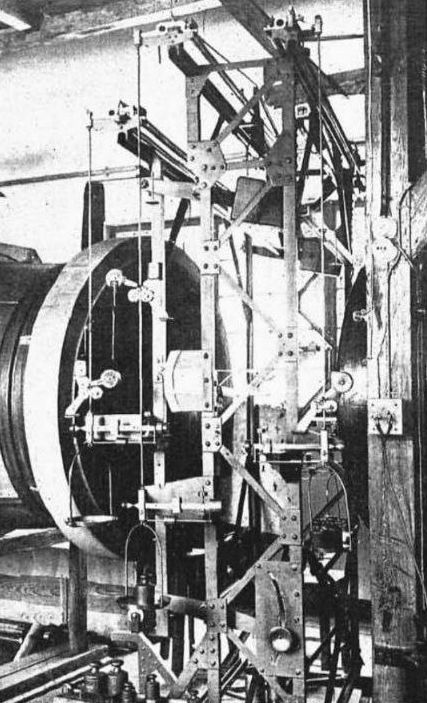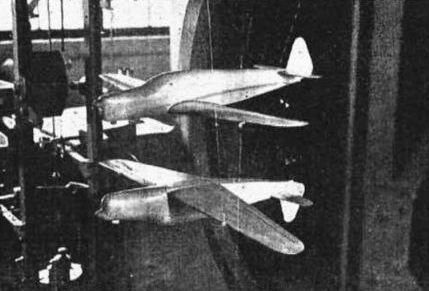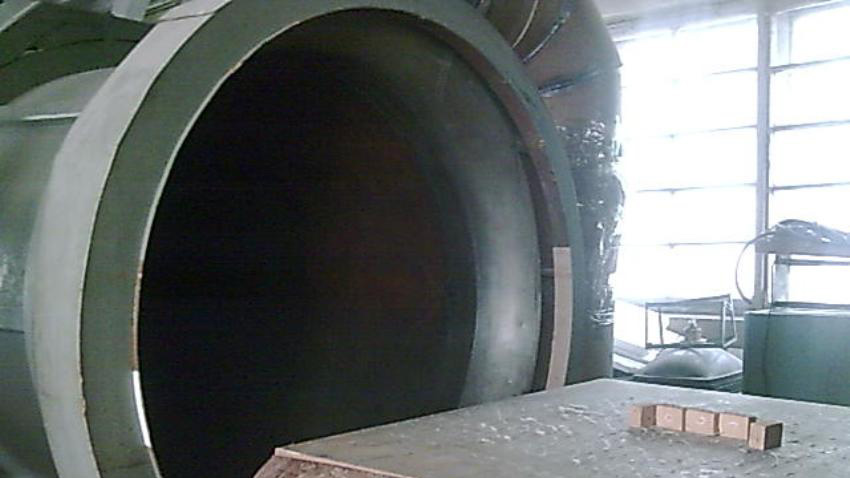The development of aviation science at Lviv Polytechnic began after the First World War. At that time, the Aviation Union of Students was created, and disciplines related to aircraft were introduced into the educational process. In the second half of the 20s of the 20th century, engineers for the aviation industry graduated and played a major role in the formation and development of this industry in Poland.
The development of the aviation industry in Lviv was preceded by the government’s decision to build and equip an aerodynamic laboratory. In 1927, a wind tunnel was brought from the Warsaw Institute of Aviation to Lviv. It was a tunnel with a diameter of 1 m, designed by Professor Witoszyński in 1925.
In 1928, the management of Lviv Polytechnic decided to create the Aerodynamic Laboratory, and already in 1929 the building was put into operation. The building of the Aerodynamic Laboratory was built on the social funds of the Anti-aircraft and Gas Defense League and the Civil Aviation Administration of the Ministry of Communications. The laboratory was located in the Lviv Polytechnic building on 12 Sapiehy Street (now – Bandery St).
Aerodynamic tests of gliders were carried out in the laboratory, as well as their elements were blown mainly for the Institute of Gliding and Motor Gliding Technology. Zygmunt Fuchs, Doctor of Engineering, was elected as the head of the Aerodynamics Laboratory and managed the laboratory until 1939. Starting from the 1930–1931 academic year, practical classes for students took place in the laboratory.
The Glider workshops operated on the basis of the Aerodynamics Laboratory. In 1929, CW-2 and CW-3 gliders were built in Szczułakiewicz’s carpentry workshop in Lviv on the 52 Shpytalna Street. They were designed by Wacław Czerwiński a famous glider designer and glider pilot. The abbreviation of the name of the models is from the abbreviation of the name and surname of their creator.
It is interesting that from October 23 to November 3, 1929, the CW-2 glider took part in the second glider expedition to Bezmiechowa Górna, where the pilot Grzeszyk set a record by staying in the air for 2 hours and 11 minutes.
Later, the workshops became the property of the Aviation Union of Lviv Polytechnic Students. In 1930, the first Polish productive glider CW-4 was designed and in July of the same year it was exhibited at the International Exhibition of Communications and Tourism in Poznań. In 1931, mass production of the CW-3 training glider began, which became very popular in training flying groups and sections, and in 1932 was replaced by the improved CWJ model. By the way, the CWJ training glider, designed in 1931, became one of the smallest training gliders in Europe at that time.
Gliders of various models: CW-5, CW-7, CW-8 were built in the Glider Workshops, as well as ITS prototypes. In total, by 1937, about 190 gliders were manufactured there.
On June 1, 1937, the workshops were purchased by the Institute of Gliding and Motor Gliding Technology – a scientific institution of Lviv Polytechnic and were named Experimental Gliding Workshops. But they belonged to Lviv Polytechnic only four months. Further away, their property was bought by the Lviv Aviation Workshops (1937–1939), which were a branch of the Podlasie Aircraft Factory. The workshops produced gliders designed by engineer Wacław Czerwiński: Salamandra, Żaba II, Delfin and PWS-101. Workshop production amounted to approximately 160 gliders.
On March 15, 1932, the Institute of Gliding Technology was established in Lviv on the basis of the Aerodynamic Laboratory, and was renamed to the Institute of Gliding and Motor Gliding Technology in 1936. The main purpose of this scientific institution was research in the field of aerodynamics, flight mechanics, piloting technology, and meteorology. Thanks to its activities, aviation sports was developed.
The head of the Institute was Professor of Engineering Stanisław Łukasiewicz. The Institute had 5 departments, four of which were located in the buildings of Lviv Polytechnic. Those were the departments of design, measurement and application, which were located on 55 Sapiehy Street, and the department of aerodynamics, on 12 Sapiehy Street. The fifth department of meteorology was located at the Institute of Geophysics of the Jan Kazimierz University.
The Institute developed successful projects of gliders and motorized gliders, including the training glider ITS-2 and ITS-7, which was a project of an aircraft without an engine. The ITS-8 motor glider was implemented in three variants: educational – ITS-8, training – ITS-8В and meteorological – ITS-8М. The glider TS-1/34 «Promyk» was of quite interesting design.
Starting from 1933, the Institute of Gliding Technology in cooperation with the Aerodynamics Laboratory of Lviv Polytechnic began to publish a specialized magazine called Czasopismo Lotnicze, which in 1934 changed its name to Lwowskie Czasopismo Lotnicze. Scientific articles on the aviation industry were published there.
The Laboratory of Aircraft Engines also operated at Lviv Polytechnic. In 1939, the construction of the Laboratory building, which was located on the territory of the airport in Sknyliv, was completed. Professor of Engineering Stanisław Łukasiewicz was chosen as the head of the laboratory, and his assistant was Stanisław Piekarski. The laboratory worked on the funds and subsidies of the Main Directorate of the Anti-aircraft and Gas Defense League. Program classes for students of Aviation Studies of Lviv Polytechnic were introduced on the basis of the laboratory. Theoretical and practical studies were conducted.
In 1939, it was planned to start the construction of three buildings for the development of the aviation sector. An aerodynamic building was created on the Stryiska Street, where a wind tunnel with a diameter of 3 m was to be installed (this area is currently used by a tank repair plant). The buildings themselves were intended to be put into operation in the middle of 1940. However, the beginning of the Second World War interrupted all plans.
While writing this article the author used materials from the magazine Życie Techniczne, the Program of Lviv Polytechnic for 1928–1939 (Program Politechniki Lwowskiej) and A. Glass’s monograph «Polish Aviation Constructions 1893–1939» (Glass A. Polskie konstrukcje lotnicze 1893–1939).
You can familiarize yourself with specialized periodicals and scientific works covering the development and achievements of aviation science in the Scientific and Technical Library of Lviv Polytechnic.



1. Аеродинамічна вага
2. Дослідження впливу землі методом дзеркального відбиття
3. Вплив сусідства будівель на вітровий потік
